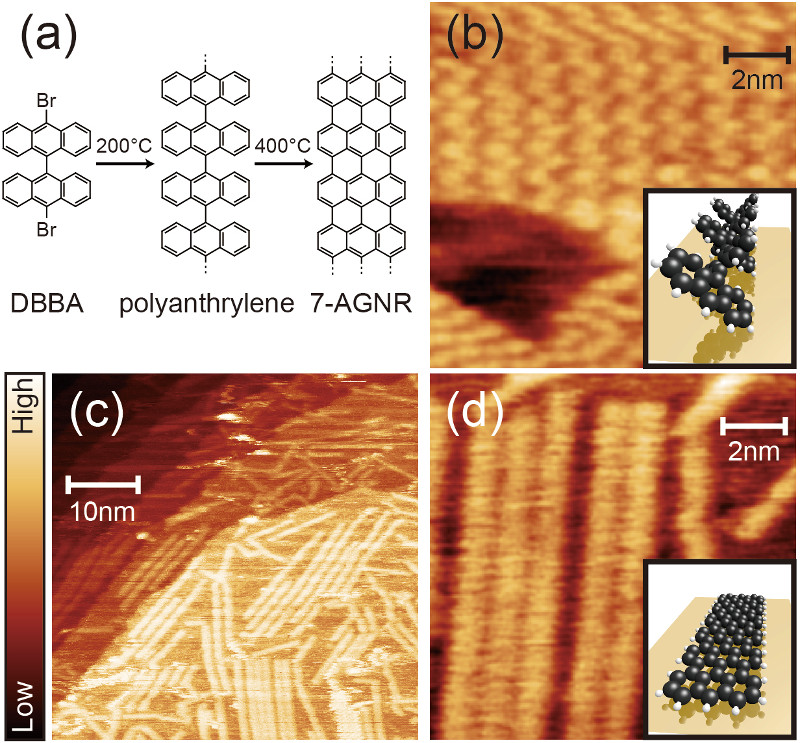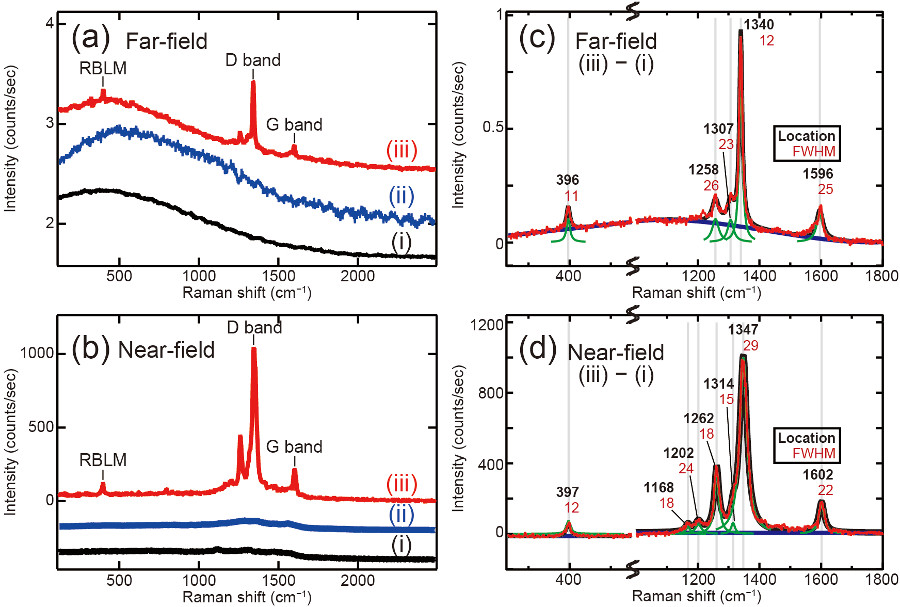
Fig. 1. Preparation of GNR on Au(111).

Fig. 2. Far- and near field Raman spectra of GNR on Au(111).
Poster
Tip-enhanced Raman spectroscopy of graphene nanoribbon on Au(111)
1Department of Physical Chemistry, Fritz-Haber Institute of the Max-Planck Society, Germany
2Department of Advanced Materials Science, The University of Tokyo, Japan
Tip Enhanced Raman Spectroscopy (TERS) is currently one of the most powerful probe techniques available and could be used to study reactions on surfaces at the single molecule level [1]. TERS combines two very well developed techniques scanning probe microscopy (SPM), used to image single molecules on surfaces, and surface enhanced Raman spectroscopy (SERS), used to characterize vibrational spectra also of single molecules on surfaces [2,3]. TERS could therefore provide unique and heretofore unprecedented insight on the adsorbate reactions o at the single-molecule level, e.g., image a molecule while it evolves from reactant to product at well defined surface sites and as well as monitoring vibrational spectra to provide bond specific information about the reaction.
We present the results of tip-enhanced Raman spectroscopy of graphene nanoribbons (GNRs) fabricated on Au(111) by on-surface polymerization technique under ultra-high vacuum conditions [4]. The 0.74 nm wide armchair GNRs are directly observed by scanning tunneling microscopy at room temperature (Fig. 1) and the characteristic vibration modes of GNRs appear in both, the far- and near-field (tip-enhanced) Raman spectra. (Fig. 2) The Raman scattering is enhanced by up to 4 × 105 in the near-field, while a strong intensity fluctuation (blinking) frequently emerges in the time series of the near-field spectra. From the STM observation of a stable adsorption structure of GNRs under the laser illumination and statistical analysis of the intensity fluctuation we attribute the origin predominantly to thermal fluctuations of the effective radius of the Au tip apex that induces the localized plasmonic field. The intensity distribution is qualitatively reproduced with a simple theoretical model in which the tip apex is approximated by ideal metal sphere.

Fig. 1. Preparation of GNR on Au(111).

Fig. 2. Far- and near field Raman spectra of GNR on Au(111).
[1] B. Pettinger, P. Schambach, C. J. Villagómez, N. Scott, Annu. Rev. Phys. Chem. 63, 379 (2012)
[2] R. Zhang et al., Nature 498, 82 (2013)
[3] J. M. Klingsporn et al., J. Am. Chem. Soc. 136, 3881 (2014)
[4] A. Shiotari, T. Kumagai, M. Wolf, J. Phys. Chem. C 118, 11806 (2014)